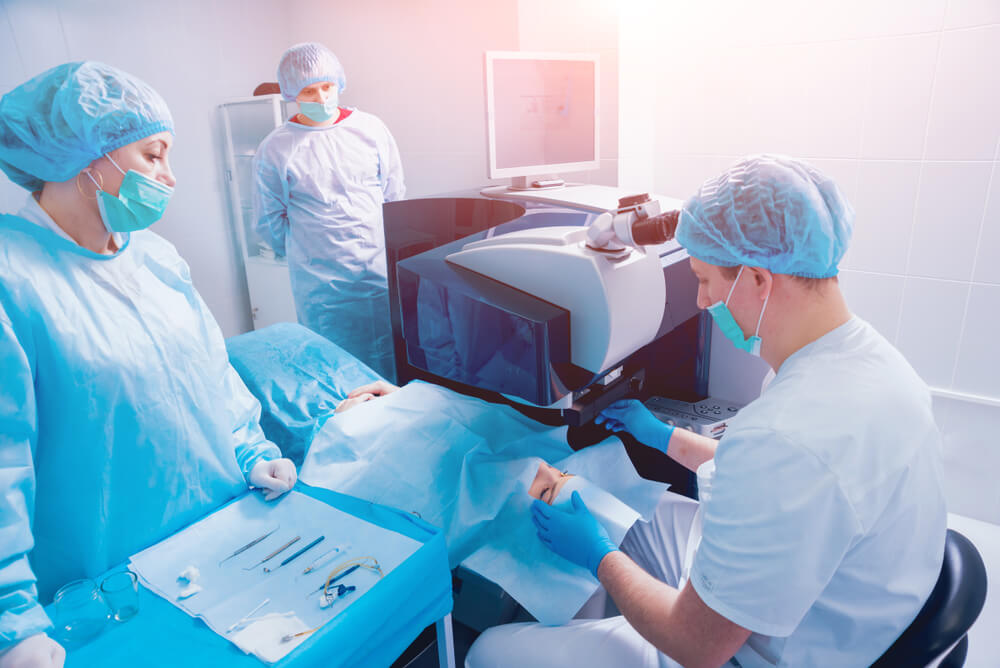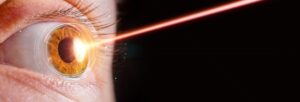
When it comes to the latest procedures in vision correction, it’s pretty easy to get sidetracked and overwhelmed. There are quite a number of different surgeries and treatments available, and those who are new to ophthalmology often have a lot of concerns and questions regarding certain procedures.
For instance, many people are confused when it comes to cataract surgery vs. LASIK. More specifically, some people who suffer from cataracts often ask if LASIK eye surgery would be a viable option to treat their vision loss. This is understandable LASIK and cataracts do share a lot of similarities. However, they are still two standalone procedures, correcting vision in different ways.
Diamond Vision Lasik Center is here to answer all your questions by explaining the differences between cataract surgery vs. LASIK.
What Is Laser Cataract Surgery?
Let’s start the LASIK vs. cataract surgery comparison by explaining the latter. The procedure aims to treat (as the name implies) cataracts. These are a clouding of the eye’s naturally clear lens. The cloudy lenses result in a vision that’s similar to trying to look through a foggy or frosty window.
Also, cataracts can make it difficult to drive, to read, to see expressions on faces, and it can interfere with your night vision, leading to partial night blindness.
Cataracts develop slowly and only cause problems as the condition worsens, so it’s best to start with cataract prevention before the problem gets too difficult. In the initial stages, eyeglasses and stronger lighting can help with the problem, but only cataract surgery can solve the problem in the long term.
Diamond Vision Lasik Center of Manhattan performs the surgery the following way: first, our doctors will establish the causes of your vision problems. After that, we map your eye with the latest tools. After diagnosing your cataract problem, doctors will then commence with surgery.
During the procedure, the surgeon will make a small incision with a laser and will insert a small probe that breaks up the cataract-damaged lens with sound waves into small pieces. After that, they will insert a new artificial lens.
These multifocal prosthetic lenses allow the retina to focus both on images near and afar. This means that the procedure will also eliminate the need to wear glasses or contacts.
The lenses have concentric rings etched into them, allowing the retina to focus on images at different distances. Simply put, multifocal lenses restore visual function while eliminating the need to wear contacts or glasses.
LASIK

Now, it’s time to say a few words about LASIK in the great LASIK vs. cataract surgery debate.
LASIK is among the most commonly performed and most well-known laser refractive surgery for addressing vision problems. This is the best alternative to wearing corrective eyewear like contacts or glasses for most.
At first glance, the difference between LASIK and cataract surgery might seem pretty subtle, as both procedures use a cutting laser.
However, LASIK aims to change the shape of the cornea (the clear tissue in the front of the eye). This shape altering improves vision.
In normal cases, the cornea refracts (bends) the light on the retina at the back of the eye precisely. However, in cases of far- and nearsightedness, or astigmatism, the cornea’s unable to bend precisely and causes blurry vision.
When is LASIK done?
In the LASIK vs. cataract surgery debate, it’s essential to know that LASIK can help treat three different vision problems.
- Farsightedness: In cases where your eyeball is shorter than the average, the cornea is too flat, and the light focus can’t focus on the retina. Instead, behind it, making near vision blurry.
- Nearsightedness: When the cornea curves sharply or when the eyeball is a bit longer than average, light rays focus way too in front of the retina. This results in blurry distant vision.
- Astigmatism: The cornea is unevenly curved or flat. This condition can disrupt either distant or near vision.
Also, it’s vital to know that LASIK may cut some nerves of the cornea, which may lead to reduced tear production, something that can be easily remedied with dry eye treatment.
LASIK vs. Cataract Surgery: Differences
As you have learned above, LASIK aims to reshape the cornea and change the way your eyes focus light on the retina.
Cataract surgery, in contrast, is a specific treatment that eye specialists apply to the eye’s lens because the natural eye lens becomes cloudy due to cataracts. These cloudy lenses are broken up, removed, and replaced with artificial prosthetic lenses during the procedure.
On the other hand, the difference between LASIK and cataract surgery is evident in other regards too. For instance, LASIK is usually performed on both eyes during a single session, while cataracts are often performed on two separate occasions (one eye at a time).
Furthermore, basic cataract surgery will be usually covered by insurance, while LASIK usually isn’t (even though you can pay for it through a flexible savings account.
Naturally, cataract surgery extras aren’t covered by insurance packages and will be out-of-pocket expenses. Cataract surgery costs can increase considerably when you opt for premium IOL or other state-of-the-art methods.
LASIK and Cataracts: Similarities
For starters, both of these procedures require the use of lasers.
In the case of all-laser LASIK, eye surgeons use two different lasers. First, they use a femtosecond laser in order to create the necessary corneal flap, then they use an excimer laser to change the shape of said corneal.
Cataract surgery requires using one laser only (femtosecond) to remove the cataract-damaged lens from the patient’s eye.
The outcomes are most important in the cataract surgery vs. LASIK comparison. Both surgeries provide patients with 20/20 vision most of the time, and on occasion, even better. Both surgeries are rather quick, taking around 15 minutes to perform. Patients are usually awake during both LASIK and cataracts (under local anesthesia).
Last but not least, both enable you to get back to your everyday life as fast as possible since there’s almost no recovery time following these surgeries.
LASIK vs. Cataract Surgery: Can You Have Them on the Same Eye?

Since one is performed on the natural lens and the other on the cornea, it’s possible to have both cataract and LASIK surgery on the same eye.
Generally, LASIK would be performed when you’re younger, while Cataract surgery will be most likely performed later in life when your eye’s natural lens has become foggy.
Are they used together? In some cases, yes. Usually, following cataract surgery, there are still some vision problems at hand when the artificial lens is in place. Then, a type of LASIK (most often PRK) is performed to correct the defocus that’s left after the procedure.
You should note that these complications are rarer and rarer as technology advances.
Do You Have Any More Questions?
As you can see, there are a couple of similarities and differences between the two procedures. Both of them address different problems, but they can be used together and on the same eye. Still, there’s much more to discuss regarding these treatments, so feel free to reach out to us and schedule an appointment.
We are more than happy to answer all of your questions!
Contact Us
If you have more questions about LASIK procedures, get in touch with us.
Related Blogs

Who Should Not Have Laser Eye Surgery
Laser eye surgery, commonly known as LASIK (Laser-Assisted In Situ Keratomileusis), has revolutionized the world of vision correction. It’s a procedure that has enabled millions

LASIK eye surgery: What is LASIK and how does it work?
What Is LASIK? Experts categorize LASIK as a refractive eye surgery in which lasers are used to correct vision problems. LASIK corrects several refractive errors,

Everything You Need To Know About The Lipiflow Treatment
LipiFlow is often referred to as a ground-breaking technology that is able to treat dry eye issues caused by meibomian gland dysfunction, or MGD. Experts
